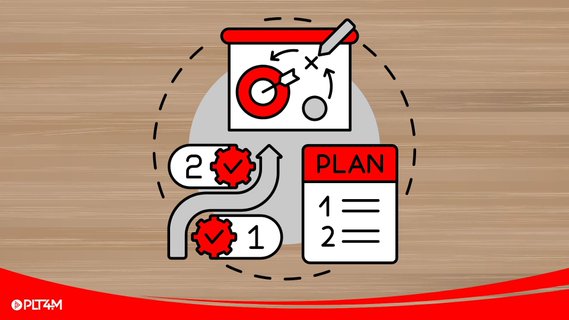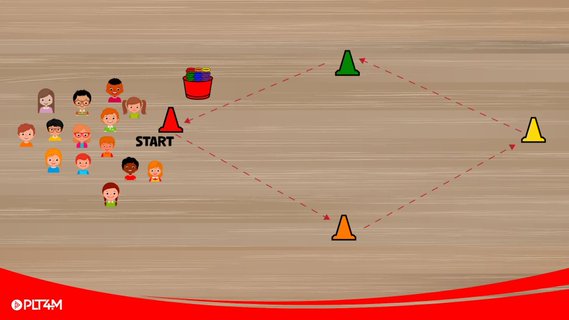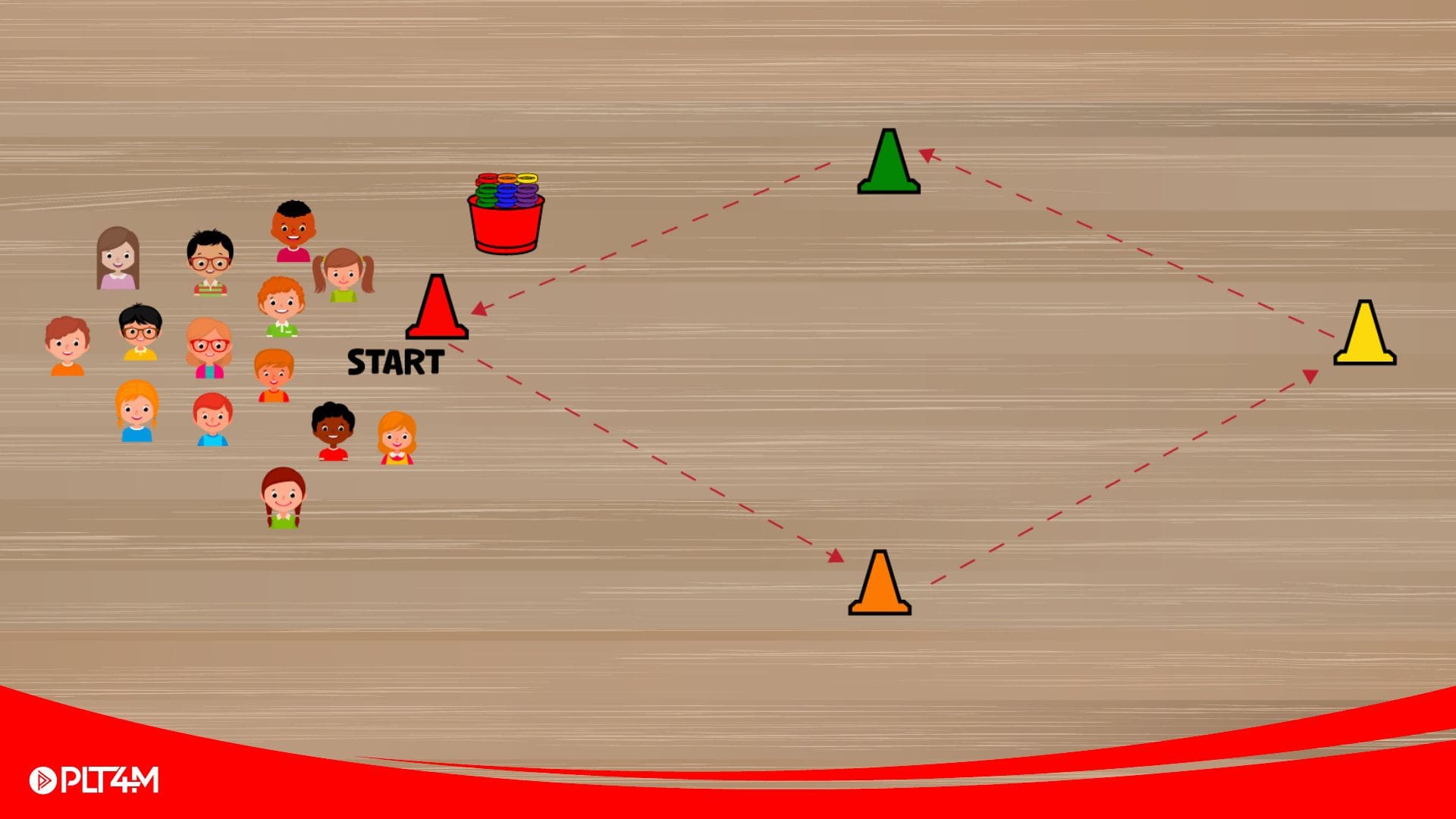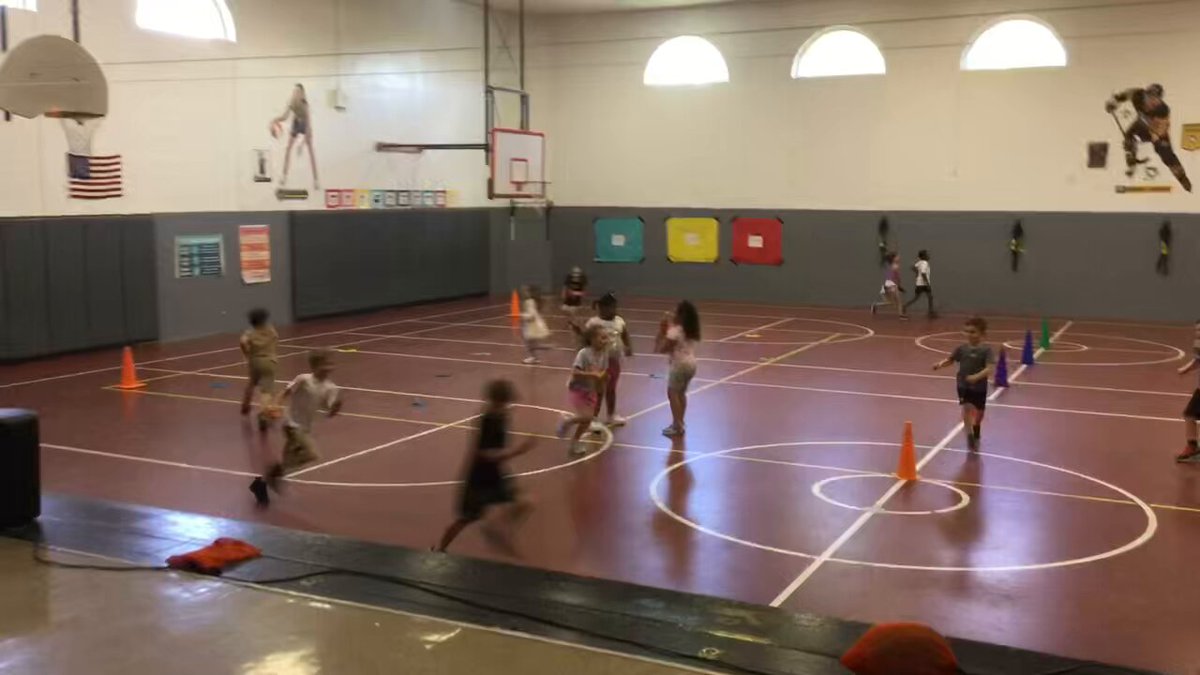One of the most technically difficult movements to learn and perform well, the clean is also one of the most beneficial. It’s a dynamic blend of strength and power development, full body mobility, and precise proprioception. It’s no surprise it’s often referred to as one of the most athletic lifts.
Starting new athletes in the clean can be a tricky endeavor due to it’s many moving parts. Here at PLT4M, we like to start at the “top” with the most basic element of the clean and work our way down over time.
Thus, we begin by teaching the “High Hang Power Clean” – basically focusing on the jump and pull with a catch in our front rack position. We introduce this movement in parts:
Hands & Feet:
The athlete’s feet should be in a neutral position directly under the hips. Their hands should be at least “thumb-swiping” distance from the thighs on the bar, with the arms hanging long and loose from the shoulders.
Position 1/Jumping Position:
From here, we instruct the athlete to simply “soften” the knees, or bend them slightly. The torso remains vertical, we’re not looking to lean forward, here. It is just a little 2 inch dip of the hips.
Pull & Catch:
We tell the athlete to jump with the legs while pulling the bar up the torso. Cue them to try and pull their shirt up with the bar, keeping the elbows high and outside. Once the bar has reached chest height, we shoot the elbows through and assume a quarter squat position – also known as the power position.
Even breaking it down to these most basic pieces, you will see many different athletes exhibiting many different faults, From here, it’s easier to identify individual issues and fix with each athlete, rather that try and break the movement down even further.
Fault 1 – Scarecrow vs Zombie:
One of the most common issues you’ll see with new athletes is the tendency to reverse curl the bar as opposed to the proper high pull. First, cue the athlete to mimic a Scarecrow, not a Zombie (elbows high and outside – video here: https://youtu.be/r2bFx9iJBQI). If the visual cue doesn’t work, provide them with a tactile cue, placing a physical obstruction like a pvc pipe in the way, forcing the bar to travel upward instead of out from the body.
Fault 2 – Starfish Catch
The next most common issue relates to hip and foot position on the catch. Often, athletes will jump the feet out wide in an effort to stabilize the weight. While this is instinctual for many, it puts them in an unsafe position under load, and also limits their ability to move weight. Cue them to avoid this starfish catch, and jump from hip-width to shoulder or squat width (video here: https://youtu.be/gA2PyfCHeps). There are a number of ways to fix this issue. You can use a tactile cue by placing your foot or other obstacle in the way of excessive width, or a visual cue with a taped target area on the floor.
Once we’ve mastered the high hang power clean, we can much more easily begin to introduce the other variations – moving all the way down to a full squat clean from the floor.
Always remember that we are looking to instill great mechanics before we add serious loading. Set good habits and the weight will come!
Teaching the Clean
Share this article:
Recent Posts
Interested if PLT4M can work at your school?
Follow Us!
High school PE sets the stage for a lifetime of health—let’s make it count! Building strong foundations, supporting student choice, and mixing up activities is the key to creating excited, confident, and active graduates. 💪🎓

High School Physical Education Curriculum
Explore how high school physical education curriculum can boost student health and support lifelong fitness for all high school students.
hubs.li
The right instant activities for elementary PE can help kick off physical education class with energy and structure. In this article, we explore a variety of instant activities that physical education teachers can tap into throughout the year.

Instant Activities For Elementary PE
Discover quick and engaging instant activities for elementary PE perfect for warm-ups, classroom management, and maximizing movement time!
hubs.li
📣#WIBestPracticesHPE📣
@PLT4M is one of our amazing sponsors.
Our very own event coordinator @Mr_L_health will be presenting on how PLT4M makes a positive impact on his students.
Come learn with us! #physed #healthed
Registration:
https://www3.uwsp.edu/conted/Pages/Best-Practices-in-Health-and-Physical-Education-Conference.aspx
🐔🌮 Chicken Taco Tag is HERE!
Explore 125+ new PE games, activities, and lessons from @pe4everykid — now on PLT4M!
Fun, inclusive, and ready to roll!
Check it out 👉
Invasion games in elementary PE classes are more than just fun and energetic activities. They serve as an effective method for teaching essential movement skills such as offensive and defensive positioning, teamwork, spatial awareness, and agility. These engaging games encourage…
PE games for elementary students are a fantastic way to get everyone moving and having fun! They not only boost physical activity but also help kids build essential motor skills, learn teamwork, and develop a love for fitness. Whether you're bringing back some old favorites or…





